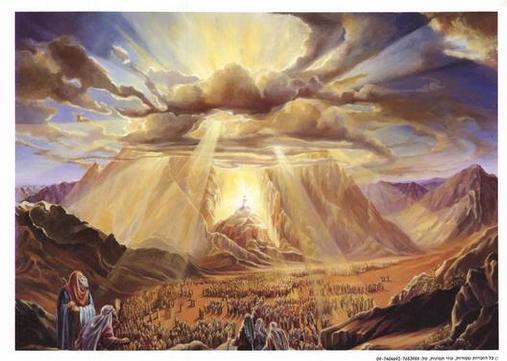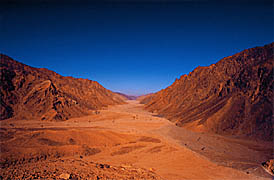|
Or, is
Mt Sinai in Arabia at: Jabal al Lawz |
PILGRIMAGE AND HOLY SPACE IN LATE ANTIQUE EGYPT
By Dr. Allen Kerkeslager
Demetrius, Josephus, and other Jewish sources that identify Mt. Sinai
with a discernible location consistently place it in northwestern
Arabia east of the Red Sea. This early Jewish tradition of location Mt.
Sinai in northwestern Arabia continued to find expression in a number
of early Christian sources both before and after the growth of the
competing Christian tradition that located Mt. Sinai in the southern
Sinai Peninsula. There is not a single piece of solid evidence that any
Jew in the pre-Christian period ever located Mt. Sinai in the Sinai
Peninsula. The notion that Mt. Sinai was located in the Sinai Peninsula
must be understood as a purely Christian invention hardly different
from the Christian identification of many other locations in the near
East with ancient biblical sites.
The mountain must be near Al-Bad ancient Madyan.
The mountain must be the highest mountain in the surrounding region.
This criteria is potentially decisive because it would limit one's
options to just one mountain.
Jabal al Lawz is uncontested as the highest mountain in the region of
ancient Madyan, Jabal al Lawz also fulfills every other criterion
stated above.
Jabal al Lawz is probably the most convincing option for identifying
the mountain with which Jews identified Mt. Sinai in the Hellenistic
and early Roman periods.
Jabal al Lawz may also be the most convincing option for identifying
the Mt. Sinai of biblical tradition.
The potential antiquity of the traditions associated with Jabal al Lawz
is without parallel in the traditions associated with other sites. The
evidence discussed earlier in this study demonstrates that traditions
relating Mt. Sinai to the site of ancient Madyan at modern Al-Bad
extend at least to the time of the oldest portions of 250 BC. In
contrast, the earliest solid date for the appearance of traditions
locating Mt. Sinai in the southern Sinai peninsula is ca. 350 AD.
It is time for research on the location of the Mt. Sinai of pre-exilic
tradition to shift its focus to Jabal al Lawz, which is associated with
local traditions 600 years older than the traditions locating Mt. Sinai
in the southern Sinai peninsula.
Allen Kerkeslager, "Jewish Pilgrimage and Jewish Identity in
Hellenistic and Early Roman Egypt," pp. 99-225 in Pilgrimage and
Holy Space in Late Antique Egypt, edited by David Frankfurter
(Religions in the Graeco-Roman World 134: Leiden, The Netherlands:
Brill, 1998). See especially the map on p. 105 and the section of this
article devoted to pilgrimage to Mt. Sinai on pp. 146-213.
Allen Kerkselager, Ph.D.
Visiting Assistant Professor
Department of Theology
Saint Joseph's University
Philadelphia's Jesuit University
|

